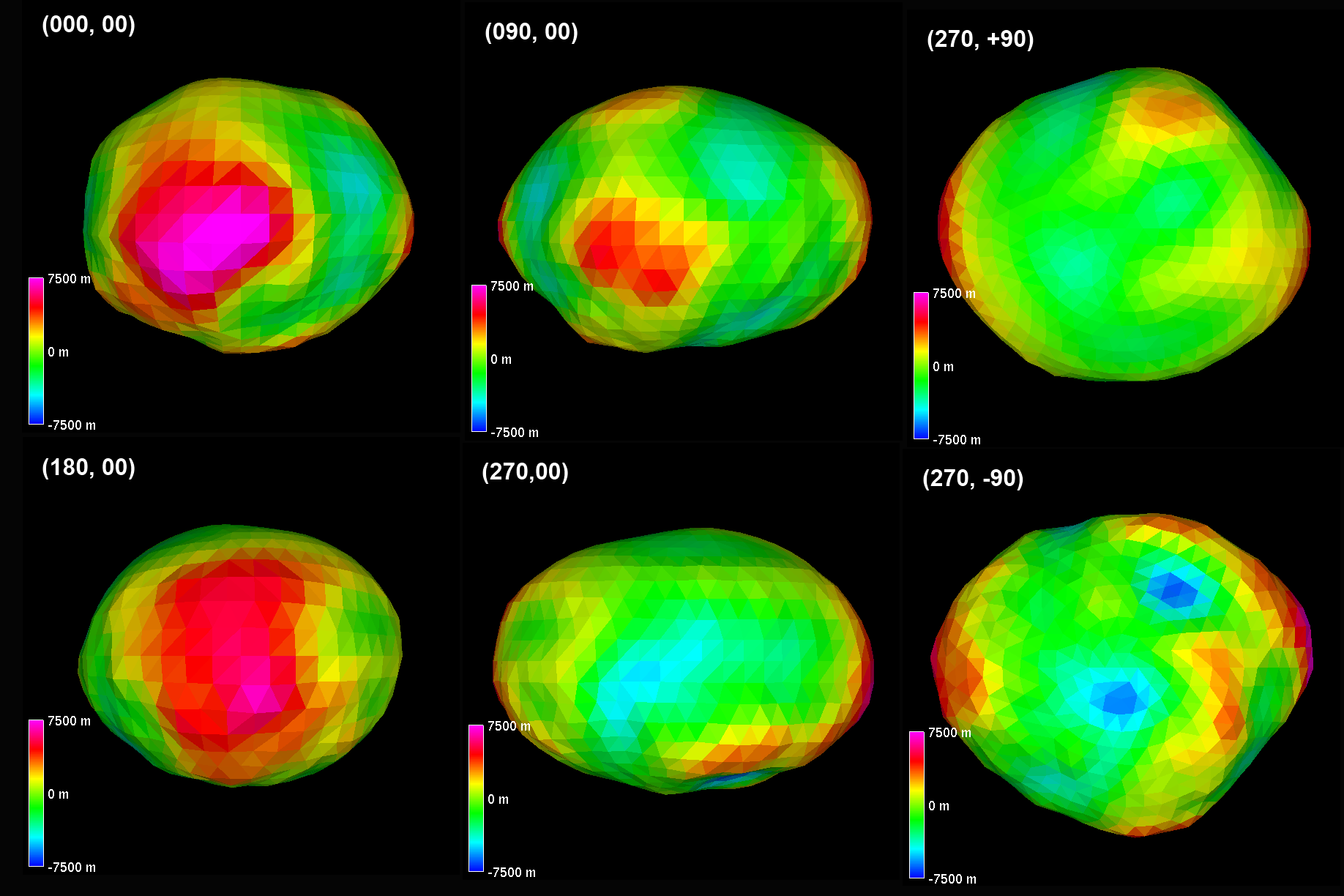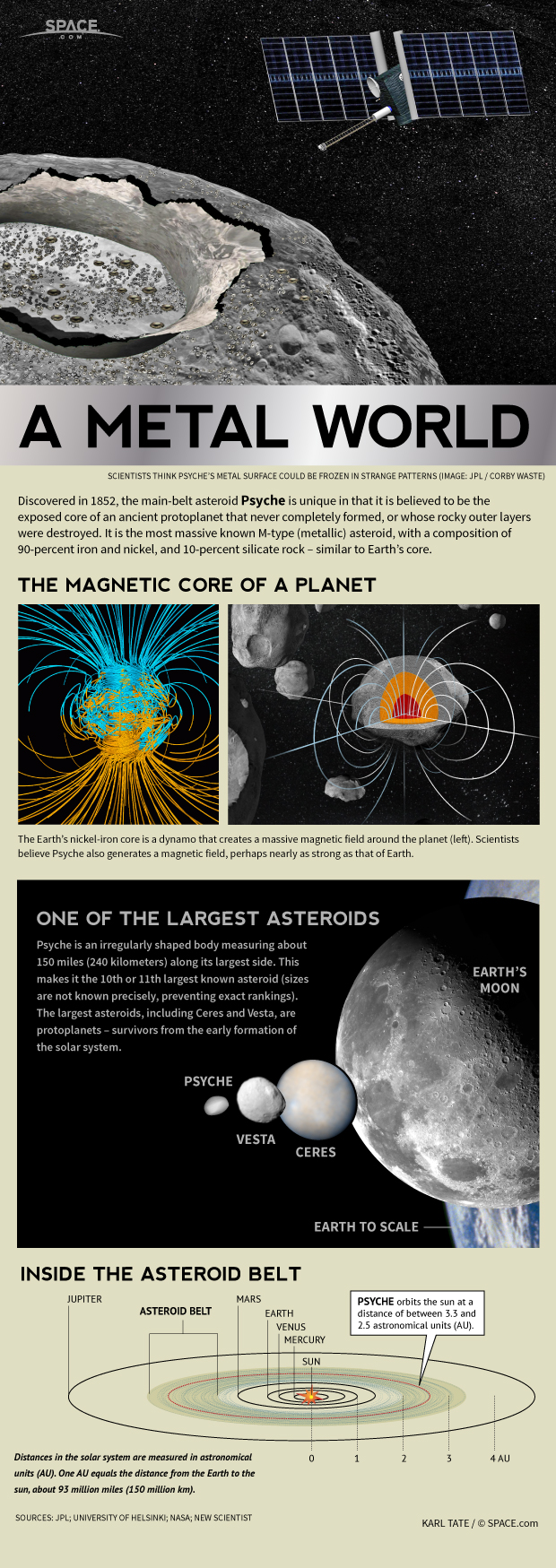Winston
Lorenzo von Matterhorn
- Joined
- Jan 31, 2009
- Messages
- 9,560
- Reaction score
- 1,748
Deep Space Optical Communications (DSOC)
https://www.nasa.gov/mission_pages/tdm/dsoc/index.html
Key DSOC technologies developed for the project include: a low-mass spacecraft disturbance isolation and pointing assembly; a high-efficiency flight laser transmitter; and a pair of high-efficiency photon counting detector arrays for the flight optical transceiver and the ground-based receiver. These technologies are integrated into the DSOC Flight Laser Transceiver (FLT) and ground-based receiver to enable photon-efficient communications with the capability to discern faint laser signals from background "noise" from solar energy scattered by the Earth's atmosphere. DSOC's FLT will be advanced to NASA Technology Readiness Level 7.
The DSOC payload, which will undergo ground validation testing in 2018-19, is scheduled to launch in 2022 aboard NASA's robotic Psyche mission. Set to study the giant metal asteroid known as "(16) Psyche" in our solar system's main asteroid belt, the investigation will help scientists understand how planets and other bodies separated into layers -- cores, mantles and crusts -- early in their formative histories. Aided by a Mars gravity assist in 2023, Psyche will reach its destination in 2026, at which point the DSOC payload is expected to help transmit the clearest, quickest information ever obtained from an expedition into the solar system.
Mission to a nickel-iron asteroid:
https://psyche.asu.edu/
16 Psyche
https://en.wikipedia.org/wiki/16_Psyche
Psyche (SY-kee; minor planet designation: 16 Psyche) is one of the ten most massive asteroids in the asteroid belt. It is over 200 km (120 mi) in diameter and contains a little less than 1% of the mass of the entire asteroid belt. It is thought to be the exposed iron core of a protoplanet (whose outer layers were blasted off by impacts billions of years ago). It is the most massive metallic M-type asteroid. Psyche was discovered by the Italian astronomer Annibale de Gasparis on 17 March 1852 from Naples and named after the Greek mythological figure Psyche.
Radar Observations and Shape Model of Asteroid 16 Psyche:


LCRD launching in 2019:
Laser Communications Relay Demonstration (LCRD)
https://www.nasa.gov/mission_pages/tdm/lcrd/overview.html
...the Laser Communications Relay Demonstration mission, or LCRD, proposes to revolutionize the way we send and receive data, video and other information, using lasers to encode and transmit data at rates 10 to 100 times faster than today's fastest RF radios, using significantly less mass and power. The wavelength of the laser light is orders of magnitude shorter than radio waves, meaning the energy is not spread out as much as it travels through space.
For example, a typical Ka-Band signal from Mars spreads out so much that the diameter of the energy when it reaches Earth is larger than Earth's diameter. A typical optical signal, however, will only spread over the equivalent of a small portion of the United States; thus there is less energy wasted. [But the pointing accuracy from planetary distances must be incredible. - W] The shorter wavelength also means there is significantly more bandwidth available for an optical signal, while radio systems have to increasingly fight for a very limited bandwidth.
Such a leap in technology could deliver video and high-resolution measurements from spacecraft over planets across the solar system -- permitting researchers to make detailed studies of conditions on other worlds the way we now track hurricanes and other climate and environmental changes here on Earth.
The Laser Communications Relay Demonstration leverages significant work done by MIT Lincoln Laboratory in Lexington, Massachusetts, for NASA's Lunar Laser Communications Demonstration, which in turn built upon the pioneering work done for NASA's Mars Laser Communications Demonstration.
In 2013, NASA's Lunar Laser Communication Demonstration, hosted by the Lunar Atmosphere and Dust Environment Explorer mission, demonstrated record-setting downlink and uplink rates, from lunar range, of 622 megabytes per second and 20 megabytes per second, respectively.
https://www.nasa.gov/mission_pages/tdm/dsoc/index.html
Key DSOC technologies developed for the project include: a low-mass spacecraft disturbance isolation and pointing assembly; a high-efficiency flight laser transmitter; and a pair of high-efficiency photon counting detector arrays for the flight optical transceiver and the ground-based receiver. These technologies are integrated into the DSOC Flight Laser Transceiver (FLT) and ground-based receiver to enable photon-efficient communications with the capability to discern faint laser signals from background "noise" from solar energy scattered by the Earth's atmosphere. DSOC's FLT will be advanced to NASA Technology Readiness Level 7.
The DSOC payload, which will undergo ground validation testing in 2018-19, is scheduled to launch in 2022 aboard NASA's robotic Psyche mission. Set to study the giant metal asteroid known as "(16) Psyche" in our solar system's main asteroid belt, the investigation will help scientists understand how planets and other bodies separated into layers -- cores, mantles and crusts -- early in their formative histories. Aided by a Mars gravity assist in 2023, Psyche will reach its destination in 2026, at which point the DSOC payload is expected to help transmit the clearest, quickest information ever obtained from an expedition into the solar system.
Mission to a nickel-iron asteroid:
https://psyche.asu.edu/
16 Psyche
https://en.wikipedia.org/wiki/16_Psyche
Psyche (SY-kee; minor planet designation: 16 Psyche) is one of the ten most massive asteroids in the asteroid belt. It is over 200 km (120 mi) in diameter and contains a little less than 1% of the mass of the entire asteroid belt. It is thought to be the exposed iron core of a protoplanet (whose outer layers were blasted off by impacts billions of years ago). It is the most massive metallic M-type asteroid. Psyche was discovered by the Italian astronomer Annibale de Gasparis on 17 March 1852 from Naples and named after the Greek mythological figure Psyche.
Radar Observations and Shape Model of Asteroid 16 Psyche:


LCRD launching in 2019:
Laser Communications Relay Demonstration (LCRD)
https://www.nasa.gov/mission_pages/tdm/lcrd/overview.html
...the Laser Communications Relay Demonstration mission, or LCRD, proposes to revolutionize the way we send and receive data, video and other information, using lasers to encode and transmit data at rates 10 to 100 times faster than today's fastest RF radios, using significantly less mass and power. The wavelength of the laser light is orders of magnitude shorter than radio waves, meaning the energy is not spread out as much as it travels through space.
For example, a typical Ka-Band signal from Mars spreads out so much that the diameter of the energy when it reaches Earth is larger than Earth's diameter. A typical optical signal, however, will only spread over the equivalent of a small portion of the United States; thus there is less energy wasted. [But the pointing accuracy from planetary distances must be incredible. - W] The shorter wavelength also means there is significantly more bandwidth available for an optical signal, while radio systems have to increasingly fight for a very limited bandwidth.
Such a leap in technology could deliver video and high-resolution measurements from spacecraft over planets across the solar system -- permitting researchers to make detailed studies of conditions on other worlds the way we now track hurricanes and other climate and environmental changes here on Earth.
The Laser Communications Relay Demonstration leverages significant work done by MIT Lincoln Laboratory in Lexington, Massachusetts, for NASA's Lunar Laser Communications Demonstration, which in turn built upon the pioneering work done for NASA's Mars Laser Communications Demonstration.
In 2013, NASA's Lunar Laser Communication Demonstration, hosted by the Lunar Atmosphere and Dust Environment Explorer mission, demonstrated record-setting downlink and uplink rates, from lunar range, of 622 megabytes per second and 20 megabytes per second, respectively.




